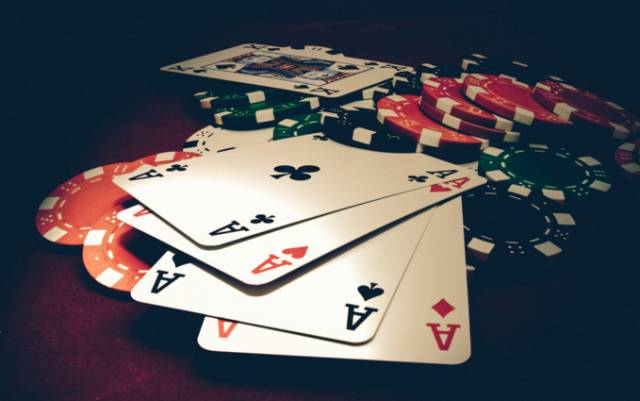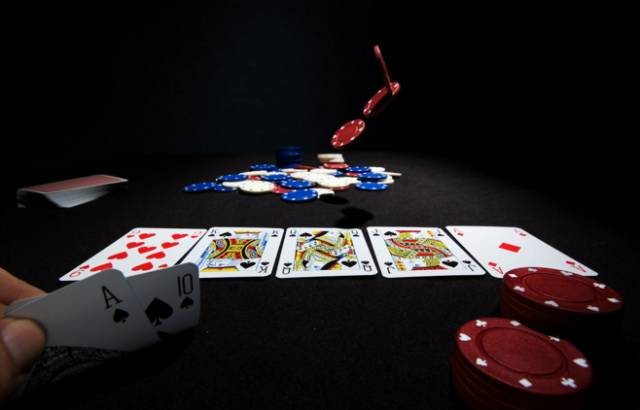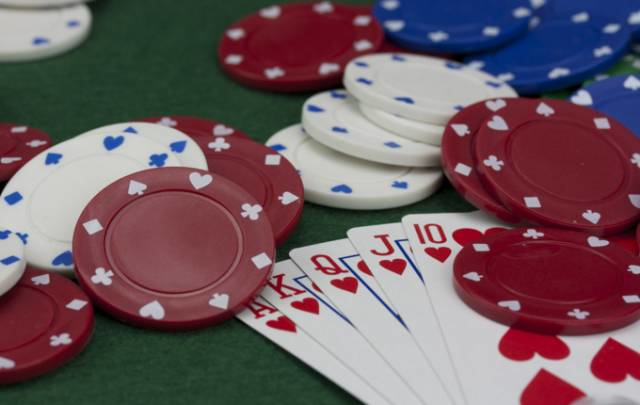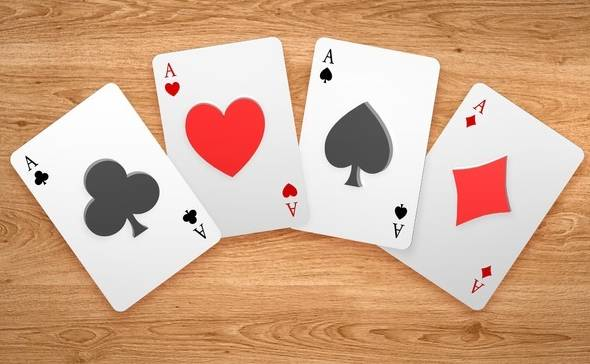Many new players are not very familiar with the rules of Texas Hold’em. Today, let’s provide a detailed introduction to the rules of Texas Hold’em.

History of Texas Hold’em
Texas Hold’em originated in Texas, USA, and is the most popular community card poker game with a history of over a hundred years in Europe and America. Its main feature is that it is easy to learn but hard to master, known as the classic poker game that “takes a moment to learn, but a lifetime to master.”
In the fall of 2004, when ESPN Sports Channel in the USA first broadcast the “World Series of Poker” during prime time, this classic card game was thrust into the spotlight, becoming an unstoppable phenomenon and a popular sport in Europe and America (No-Limit Texas Hold’em is the main event of the World Series of Poker (WSOP) and the World Poker Tour (WPT)). Currently, poker event viewership ranks at the top, surpassing familiar events like the NBA and F1. Due to television exposure, winners of these events have become well-known heroes, not only earning substantial prize money but also becoming public idols. Texas Hold’em now boasts about 100 million loyal players worldwide.
Betting Formats in Texas Hold’em
Texas Hold’em is divided into three types based on betting limits: Limit, No-Limit, and Pot-Limit. Among them, No-Limit Texas Hold’em is simple in rules, exciting, and interesting, and has won players’ favor with absolute advantage. Over time, it has developed a mature playing system and unique culture, attracting a loyal audience.

Basic Gameplay of Texas Hold’em
Each player is dealt 2 hole cards, followed by 5 community cards being dealt in sequence. Each player selects 5 cards from their 2 hole cards and the 5 community cards to form the best possible hand, which is then compared with the hands of the other players to determine the winner. The ranking of hands from highest to lowest is as follows: Royal Flush > Straight Flush > Four of a Kind > Full House > Flush > Straight > Three of a Kind > Two Pair > One Pair > High Card. There are four rounds of betting in Texas Hold’em: the first round occurs after each player is dealt 2 hole cards; the second round occurs after the first 3 community cards (the flop) are dealt; the third round occurs after the 4th community card (the turn) is dealt; the fourth and final round occurs after the 5th community card (the river) is dealt. After the final betting round, all remaining players reveal their cards, and the player with the best hand wins the pot.
Poker Hand Rankings
Royal Flush A, K, Q, J, and 10 of the same suit. Tie: If two or more players have a Royal Flush at showdown, the pot is split equally.
Straight Flush Five consecutive cards of the same suit. Tie: If two or more players have a Straight Flush, the highest ranking top card wins the pot. If the Straight Flushes are of the same rank, the pot is split equally.
Four of a Kind Four cards of the same rank and one unrelated card. Tie: If two or more players have Four of a Kind, the hand with the higher four cards wins. If they have the same four cards, the fifth card (kicker) determines the winner. If the kicker is also the same, the pot is split equally.
Full House Three cards of one rank and two cards of another rank. Tie: If two or more players have a Full House, the hand with the higher three cards wins. If the three cards are the same, the hand with the higher pair wins. If both the three cards and the pairs are the same, the pot is split equally.
Flush Five cards of the same suit, not in sequence. Tie: If two or more players have a Flush, the highest card wins. If the highest cards are the same, the second, third, fourth, or fifth card determines the winner. If all cards are the same, the pot is split equally.
Straight Five consecutive cards of different suits. Tie: If two or more players have a Straight, the hand with the highest top card wins. If the top cards are the same, the pot is split equally.
Three of a Kind Three cards of the same rank and two unrelated cards. Tie: If two or more players have Three of a Kind, the highest set of three cards wins. If the three cards are the same, the fourth card determines the winner. If necessary, the fifth card will also be considered. If all cards are the same, the pot is split equally.
Two Pair Two cards of one rank, two cards of another rank, and one unrelated card. Tie: If two or more players have Two Pair, the hand with the highest pair wins. If the highest pairs are the same, the second pair is considered. If both pairs are the same, the fifth card (kicker) determines the winner. If the kicker is also the same, the pot is split equally.
One Pair Two cards of the same rank and three unrelated cards. Tie: If two or more players have One Pair, the hand with the highest pair wins. If the pairs are the same, the highest of the three remaining cards wins. If the highest cards are also the same, the second highest and then the third highest cards are considered. If all cards are the same, the pot is split equally.
High Card Five cards that do not form any of the above combinations. Tie: If two or more players have a High Card, the highest card wins. If the highest cards are the same, the second, third, fourth, and fifth highest cards are considered in order. If all cards are the same, the pot is split equally.

Dealer First, determine the position of the dealer (referred to as the Button). In the first round, the dealer position is randomly assigned by the system. In subsequent rounds, the dealer position moves one place clockwise.
Blinds To ensure the game progresses, the first person to the left of the dealer places a forced bet (known as the small blind), and the second person to the left of the dealer places two forced bets (known as the big blind).
Hole Cards After placing the blinds, starting with the big blind player and moving clockwise, each player is dealt two cards face down, known as hole cards or starting cards.
First Betting Round
- After the hole cards are dealt, the player to the left of the big blind begins the action. The action consists of the following options: a) Fold: Abandon the current hand and no longer compete for the pot. b) Check: Pass the action to the next player without betting, or set a trap. c) Call: Match the previous bet amount. d) Raise: Increase the bet amount.
- Once a player has acted, the action moves clockwise to the next player until all players have either folded or matched the same bet amount in the pot. Players who have folded are no longer involved in the action.
Flop and Second Betting Round
- Deal three cards to the center of the table, known as the “flop.” These are community cards visible to everyone.
- Starting with the small blind player and moving clockwise, players take actions similar to the first betting round until no one folds, and all players have contributed the same amount to the pot. Players who have folded no longer participate in the game.
Turn and Third Betting Round
- Deal the fourth card, known as the “turn.” This is a community card visible to everyone.
- Starting with the small blind player and moving clockwise, players take actions similar to the first betting round until no one folds, and all players have contributed the same amount to the pot. Players who have folded no longer participate in the game.
River and Fourth Betting Round
- Deal the fifth card, known as the “river.” This is a community card visible to everyone.
- Starting with the small blind player and moving clockwise, players take actions similar to the first betting round until no one folds, and all players have contributed the same amount to the pot. Players who have folded no longer participate in the game.
Showdown and Hand Comparison
After the four betting rounds are completed, if two or more players remain, a showdown occurs. During the showdown, each player uses any five cards from their two hole cards and the five community cards to form the best possible hand. The player with the best hand wins the entire pot. If there are multiple winners, the pot is split equally.
All-In
When a player raises or attempts to call but does not have enough chips, they can go all-in. When a player goes all-in, they commit all their remaining chips, and the pot is divided into the main pot and side pots. Any bets exceeding the all-in player’s chips are added to the side pots, which the all-in player cannot win. Similarly, when multiple players go all-in, multiple side pots may be created.
At the end of the hand, the pots are compared starting from the smallest possible pot that can be won. The winner of each pot may be the same or different for each pot.

List of Texas Hold’em Terms
Action: A player’s decision. There are seven possible decisions in Texas Hold’em:
- Bet: Place chips into the pot.
- Call: Match the current bet amount.
- Fold: Give up the opportunity to continue in the hand.
- Check: Pass the decision to the next player without betting, if no one has bet.
- Raise: Increase the current bet amount.
- Re-raise: Raise after another player has raised.
- All-in: Bet all remaining chips at once.
Button: The order of betting is determined by the position of the dealer “button.” This is a marker that rotates clockwise among the players each hand.
Blinds: At the start of each hand, “blinds” must be posted. These are bets made before receiving cards to ensure there is always money in the pot to win. The player immediately to the left of the dealer posts the “small blind,” usually half the minimum bet, and the player to their left posts the “big blind,” which is equal to the minimum bet.
Community Cards: The five cards dealt face up on the table that all players can use.
Flop: The first three community cards dealt.
Turn: The fourth community card dealt.
River: The fifth community card dealt.
Hole Cards: The two private cards dealt to each player at the start of the hand, also known as “pocket cards.”
Kicker: If two players have the same pair, three-of-a-kind, etc., the player with the higher “kicker” (the highest unpaired card) wins.
Limit: The amount of the big blind, representing the minimum bet and indicating the stakes of the game.
Pot: The total amount of chips bet in a single hand, which is the prize for that hand.
Showdown: If there are still players remaining after the final betting round, they reveal their hole cards to determine the winner.
Side Pot: When a player goes all-in, a side pot is created. This side pot contains all bets made up to that point. If the all-in player wins the hand, they can only win the side pot, not the additional bets made by other players after they went all-in.

Texas Hold’em Beginner’s Guide
When it’s your turn to act in the game, you should first determine:
- Your position at the table to find the corresponding row in the Starting Hand Chart (SHC).
- Your starting hand and the actions of your opponents before you to find the exact column in the SHC.
Very Strong Hands: AA, KK, QQ / AKs / AKo Opponent’s actions before you: Early position, Middle position, Late position, Small Blind, Big Blind. No matter what your opponents did, raise!
Strong Hands: JJ, 10-10, 99 / AQs, AQo, AJs Opponent’s actions before you: Early position, Middle position, Late position, Small Blind, Big Blind. All players fold: Raise One player calls: Raise Two or more players call: Raise Only one player raises, but no players call: Fold (Early position), Raise (Middle, Late, Blinds) Only one player raises, and at least one player calls: Call
Medium Hands: AJo, A-10s, A-10o, KQs, KQo Opponent’s actions before you: Early position, Middle position, Late position, Small Blind, Big Blind All players fold: Fold (Early position), Raise (Middle, Late, Blinds) One player calls: Fold (Early position), Raise (Middle, Late, Blinds) Two or more players call: Fold (Early position), Raise (Middle, Late, Blinds) Only one player raises, but no players call: Fold (Early, Middle), Call (Late, Blinds) Only one player raises, and at least one player calls: Fold (Early), Call (Middle, Late, Blinds; Call with KQs)
Strong Speculative Hands: 88 to 22 / KJs, K-10s, QJs, Q-10s, J-10s, 10-9s Opponent’s actions before you: Early position, Middle position, Late position, Small Blind, Big Blind All players fold: Fold (Early position), Raise (Middle, Late, Blinds) One player calls: Fold (Early position), Call (Middle, Late), Check (Blinds) Two or more players call: Call (Middle, Late), Check (Blinds) Only one player raises, but no players call: Fold (Early, Middle), Call (Late, Blinds) Only one player raises, and at least one player calls: Call (Middle, Late, Blinds)
Mixed Hands: KJo, K-10o, QJo, Q-10o, J-10o / A9s to A2s, K9s, 98s, 87s Opponent’s actions before you: Early position, Middle position, Late position, Small Blind, Big Blind All players fold: Fold (Early position), Raise (Middle, Late, Blinds) One player calls: Fold (Early position), Call (Middle, Late), Check (Blinds) Two or more players call: Fold (Early), Call (Middle, Late), Check (Blinds) Only one player raises, but no players call: Fold Only one player raises, and at least one player calls: Fold If there has been more than one raise before you, you should fold all hands except very strong hands like AA, KK, QQ / AKs / AKo.
The Starting Hand Chart lists all starting hands that have value. Hands not listed in the chart are not recommended and should be folded during the game.


